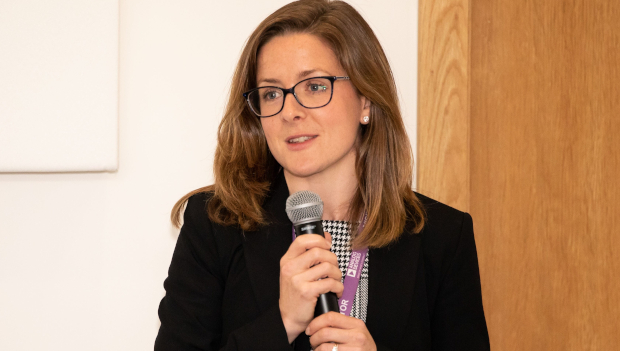
Focus on research: Prof Claire Gormley
Prof Claire Gormley is a co-director of the Science Foundation Ireland centre for research training in the foundations of data science, and a funded investigator at the Insight Centre for Data Analytics and the VistaMilk Centre for Precision Pasture-based Dairy. In this interview she discusses the many applications of statistics and how to establish a data science talent pipeline.
Tell us about your career journey.
I grew up in Co Derry in Northern Ireland and then I came to Dublin where I did my undergraduate degree in mathematics. I ended up doing mostly statistics, particularly in my final year. I was headed into the financial sector, but then I found what research was going on by doing a final year project with Prof Brenda Murphy, who’s now in UCD and a colleague, and that started me on a track to do a PhD in statistics. I spent some time during that in the University of Washington in Seattle, which was a really fantastic city to live in. Then I came back to Dublin and I’ve been in UCD since.
You turned down the opportunity to go into industry. That’s not something that appealed to you?
No. I think I just really enjoyed research. I don’t think I had realised I was so much of a scientist. With the discipline of statistics, you’re interacting with such different areas, analysing data in agriculture one minute and in social science the next. You get to interact with this huge array of projects.
There are very few students and very few disciplines that statistics doesn’t interact with or have an impact. For example, we are collaborating with historians trying to link data from the 1901 and the 1911 censuses together. So you have to use statistical methods to match those up. So it brings you into disciplines and subjects that you would think of nothing to do with.
Take us through some of your more recent projects
At Vista Milk I’m working with Teagasc on livestock breeding programmes. We’re trying to analyse the genetic data of cattle to try and uncover genes that we can use for genetic selection to improve protein levels in milk. We have to develop statistical methods that allow us to model the relationships between the protein and milk and how that links to the genetics of an animal.
At Insight I have a postdoctoral researcher working on methods to link spectral data in milk. So, you can ‘zap’ a sample of milk with an infrared spectrometer and it will give you a signal, from which we’re trying to learn the levels of fat, protein or acidity, without the need for lab tests.
You’re also involved in the centre for research training in the foundations of data science.
It’s a fantastic endeavor. It’s a collaboration with the University of Limerick, the Hamilton Institute in Maynooth University, University College Dublin, and Skillnet Ireland,
The CRT is a PhD research training programme. It’s large scale, which wouldn’t have been typical before in Ireland. We will train up to 130 PhD students and it’s a great structure. The students come in cohorts and we have four coming in across four years, so there is a collegiate and networking aspect that wouldn’t traditionally be there in PhD training programmes. All of the students will spend a minimum of 12 weeks working with an industry partner in the summer of their first year.
When we were putting together the proposal we had meetings industry and asked they needed graduates to have. We took that on board and built it into the programme and that’s why the industry partners are involved. It’s very much about access to the talent pipeline.
Looking forward to the future, then what sort of areas of data science, and statistics are exciting to you?
My answer as a statistician is that I find everything fascinating. Data science is a broad umbrella term that encapsulates everything from how we collect data to how we store it, how we analyse it, how we visualise it, how we report on it. That full cycle. As the the boundaries of data science move forward, statistics will move with it.








Subscribers 0
Fans 0
Followers 0
Followers